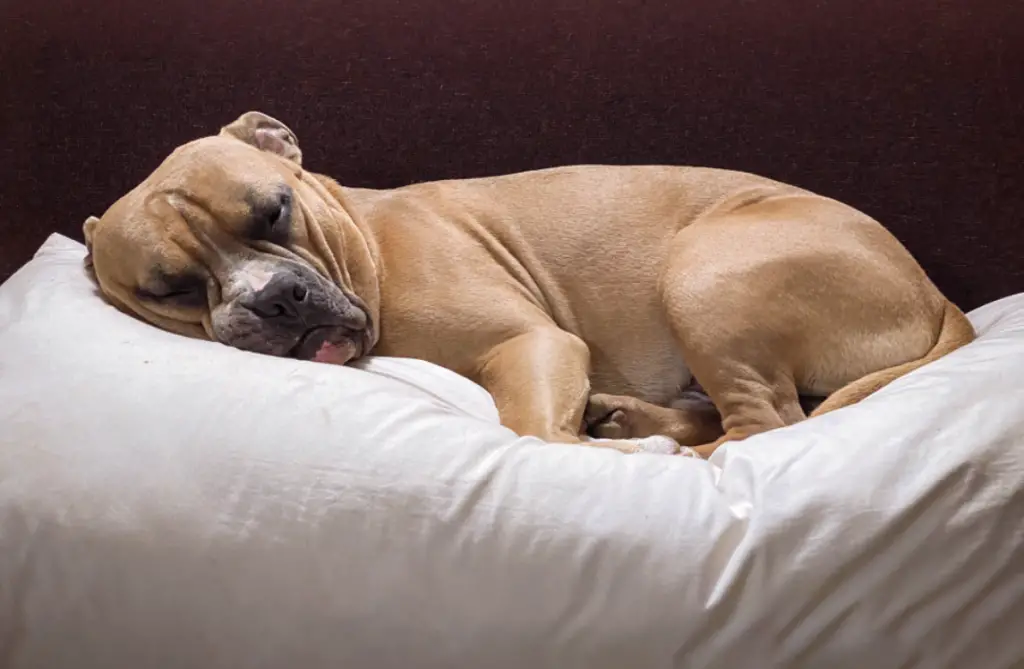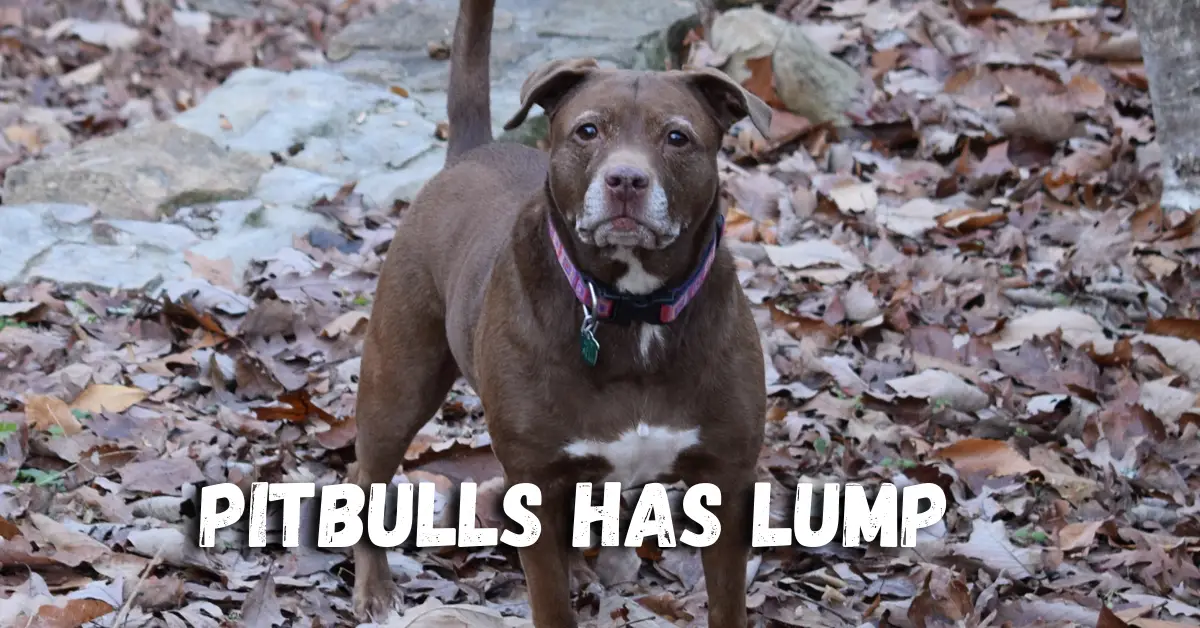Pitbulls are one of the most beloved breeds of dogs, known for their loyalty, strength, and affectionate nature.
However, like all dogs, pitbulls are prone to various health issues, and one of the most concerning issues that owners may encounter is the presence of lumps on their dogs. Lumps can be harmless or potentially cancerous, and it is important for owners to understand the different types of lumps and know when to take their dogs to the veterinarian.
This article will provide a comprehensive guide to pitbull lumps, including the causes, types, and treatments available.
Understanding the Causes of Pitbull Lumps

Pitbull lumps can develop due to a wide variety of reasons, ranging from benign fatty tumors to cancerous growths. Some of the most common causes of pitbull lumps include:
Lipomas
Lipomas are the most common type of benign tumor in dogs and are usually caused by the accumulation of fat cells. They are soft to the touch and typically painless. While they are not cancerous, they can grow quite large and may need to be removed if they are causing discomfort or interfering with your dog’s mobility.
Mast Cell Tumors
Mast cell tumors are a type of cancerous tumor that can appear anywhere on the body. They can be difficult to diagnose and can spread quickly, making early detection crucial.
Mast cell tumors can appear as lumps that are soft to the touch, red, or ulcerated. They can also cause itching, vomiting, or diarrhea. If you notice any of these symptoms or suspect your pitbull has a mast cell tumor, it is important to schedule an appointment with your veterinarian as soon as possible.
Sebaceous Cysts
Sebaceous cysts are benign lumps that form when oil glands become blocked. They can be easily removed if they become problematic.
Sebaceous cysts usually appear as a raised bump on the skin filled with fluid or pus. They can be mistaken for other types of lumps, so it is important to have them examined by a veterinarian to confirm the diagnosis.
Types of Lumps on Pitbulls
Not all lumps on pitbulls are created equal, and it is important to understand the different types of lumps that can develop. Some of the most common types of lumps on pitbulls include:
Soft Lumps
Soft lumps are usually benign lipomas that can grow quite large but are not dangerous to your dog’s health. They can appear anywhere on the body and are generally soft to the touch. If a soft lump is causing discomfort or interfering with your dog’s mobility, your veterinarian may recommend removing it.
Hard Lumps
Hard lumps can be indicative of cancerous growths or mast cell tumors, which can be aggressive and require immediate attention. They can be painful to the touch and may grow quickly. If you notice a hard lump on your pitbull, it is important to have them examined by a veterinarian as soon as possible.
Fluid-Filled Lumps
Fluid-filled lumps can be hematomas or abscesses and may require drainage or surgical intervention. They can be painful to the touch and may feel warm to the touch. If you notice a fluid-filled lump on your pitbull, it is important to have them examined by a veterinarian as soon as possible.
When Do Lumps on Pitbulls Develop?

Lumps can develop at any age, but the risk of developing lumps increases as a dog gets older. It is not uncommon for pitbulls to develop lumps as they age, and while some lumps may be harmless, others can be serious and require medical attention. As a responsible pet owner, it is important to regularly examine your pitbull for any lumps, bumps, or changes in their skin and behavior.
How Can You Tell If a Lump is Cancerous?
Cancerous bumps can be difficult to identify, but some signs that may indicate a cancerous growth include:
Rapid Growth
Cancerous growths can grow quickly and may change in size or shape over a short period of time. If you notice a bump that is rapidly growing or changing, it is important to have it checked by a veterinarian.
Bleeding or Ulceration
Cancerous growths may bleed or become ulcerated, which can be a sign that they are cancerous. If you notice any bleeding or ulceration on a bump, it is important to have it checked by a veterinarian.
Pain or Discomfort
Cancerous growths may cause pain or discomfort to your dog. If you notice that your dog is licking or scratching at a particular area or seems to be in pain, it is crucial to have them examined by a veterinarian.
When Should You Visit a Vet for Lumps on Your Pitbull?
If you notice any new lumps, bumps, or changes in your pitbull’s skin or behavior, it is important to schedule an appointment with your veterinarian. They will perform a physical exam and may recommend additional tests, such as a biopsy or blood work, to determine the cause of the lump.
In general, you should visit a veterinarian if you notice any of the following:
- New or Unusual Lumps: If you notice any new lumps or bumps on your pitbull, it is important to have them examined by a veterinarian.
- Changes in the Size or Shape of Lumps: If you notice that an existing lump has changed in size or shape, it is important to have it checked by a veterinarian.
- Bleeding or Ulceration: If you notice any bleeding or ulceration on a lump, it is essential to have it checked by a veterinarian.
How are Lumps on Pitbulls Diagnosed?
The diagnosis of lumps on pitbulls usually involves a physical exam, as well as additional tests, such as blood work, ultrasound, or biopsy. During a physical exam, your veterinarian will examine the lump and may recommend additional tests to determine its cause.
If your veterinarian suspects that a lump is cancerous, they may recommend a biopsy. A biopsy involves removing a small amount of tissue from the lump and examining it under a microscope to determine whether it is cancerous or benign.
Can You Prevent Lumps on Your Pitbull?
While it may not be possible to prevent all lumps on your pitbull, there are some steps you can take to reduce their risk of developing lumps. These include:
Regular Check-Ups
Regular check-ups with your veterinarian can help identify lumps early on and allow for prompt treatment. Your pet should receive a full physical examination at least once a year and more frequently if recommended by your veterinarian.
A Healthy Diet
A healthy diet can help support your pitbull’s immune system and reduce its risk of developing lumps. Avoiding processed foods and providing your pet with wholesome, nutrient-dense meals can help keep them in good health.
Regular Exercise
Regular exercise can help keep your pitbull at a healthy weight, reducing its risk of developing lumps. Aim for at least 30 minutes of exercise per day, including walks, playtime in the yard, and trips to the dog park.
Conclusion
In conclusion, lumps on pitbulls can be a cause for concern, but not all lumps are cancerous. It is important to regularly examine your pitbull for any lumps or changes in their skin or behavior, and to have them examined by a veterinarian if you notice any new or unusual lumps.
Early detection and treatment can help improve your pitbull’s prognosis and quality of life. By following some simple preventive measures, you can also reduce your pitbull’s risk of developing lumps.


